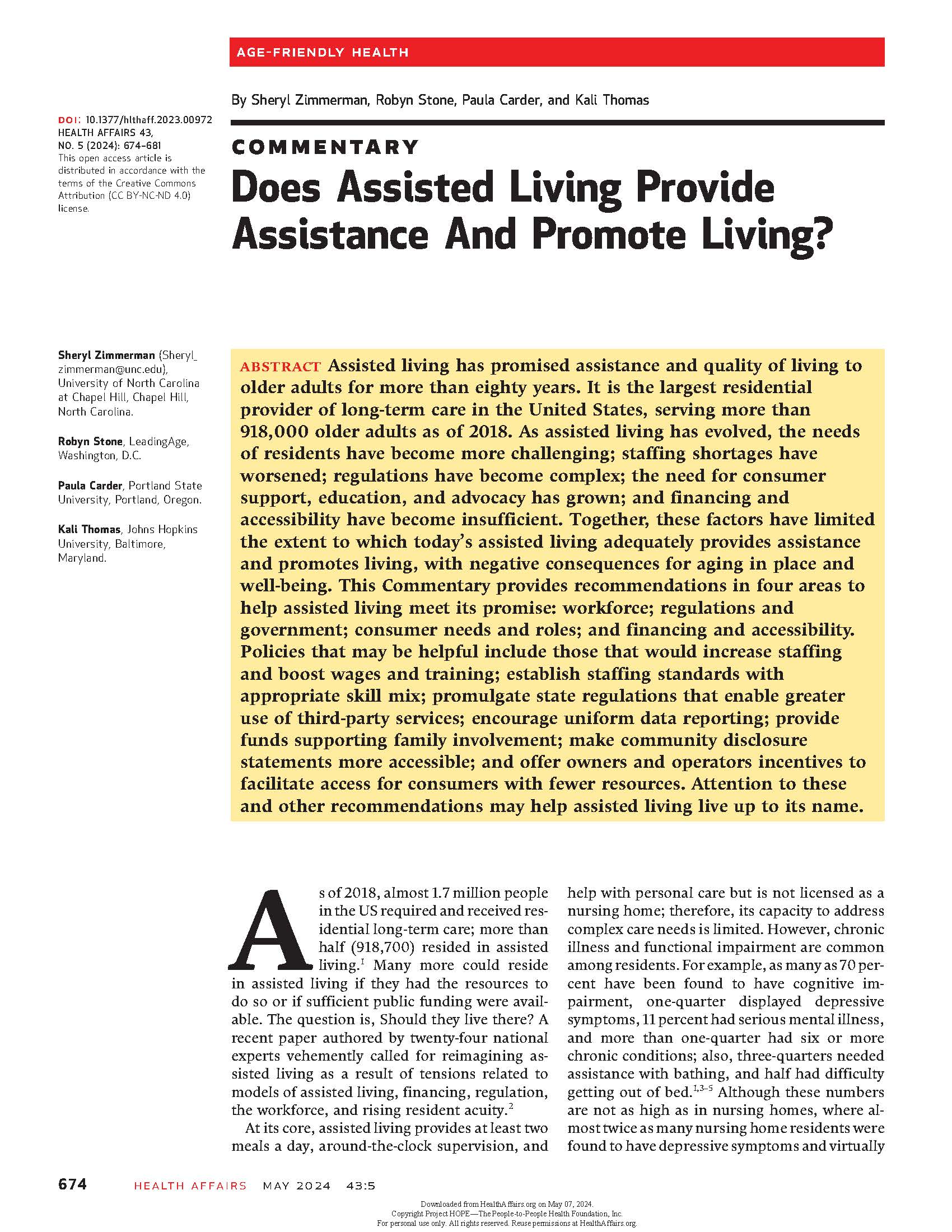Importance
Evacuation has been found to be associated with adverse outcomes among nursing home residents during hurricanes, but the outcomes for assisted living (AL) residents remain unknown.
Objective
To examine the association between evacuation and health care outcomes (ie, emergency department visits, hospitalizations, mortality, and nursing home visits) among Florida AL residents exposed to Hurricane Irma.
Design, Setting, and Participants
Retrospective cohort study using 2017 Medicare claims data. Participants were a cohort of Florida AL residents who were aged 65 years or older, enrolled in Medicare fee-for-service, and resided in 9-digit zip codes corresponding to US assisted living communities with 25 or more beds on September 10, 2017, the day of Hurricane Irma’s landfall. Propensity score matching was used to match evacuated residents to those that sheltered-in-place based on resident and AL characteristics. Data were analyzed from September 2022 to February 2024.
Exposure
Whether the AL community evacuated or sheltered-in-place before Hurricane Irma made landfall.
Main Outcomes and Measures
Thirty- and 90-day emergency department visits, hospitalizations, mortality, and nursing home admissions.
Results
The study cohort included 25 130 Florida AL residents (mean [SD] age 81 [9] years); 3402 (13.5%) evacuated and 21 728 (86.5%) did not evacuate. The evacuated group had 2223 women (65.3%), and the group that sheltered-in-place had 14 556 women (67.0%). In the evacuated group, 42 residents (1.2%) were Black, 93 (2.7%) were Hispanic, and 3225 (94.8%) were White. In the group that sheltered in place, 490 residents (2.3%) were Black, 707 (3.3%) were Hispanic, and 20 212 (93.0%) were White. After 1:4 propensity score matching, when compared with sheltering-in-place, evacuation was associated with a 16% greater odds of emergency department visits (adjusted odds ratio [AOR], 1.16; 95% CI, 1.01-1.33; P = .04) and 51% greater odds of nursing home visits (AOR, 1.51; 95% CI, 1.14-2.00; P = .01) within 30 days of Hurricane Irma’s landfall. Hospitalization and mortality did not vary significantly by evacuation status within 30 or 90 days after the landfall date.
Conclusions and Relevance
In this cohort study of Florida AL residents, there was an increased risk of nursing home and emergency department visits within 30 days of Hurricane Irma’s landfall among residents from communities that evacuated before the storm when compared with residents from communities that sheltered-in-place. The stress and disruption caused by evacuation may yield poorer immediate health outcomes after a major storm for AL residents. Therefore, the potential benefits and harms of evacuating vs sheltering-in-place must be carefully considered when developing emergency planning and response.


